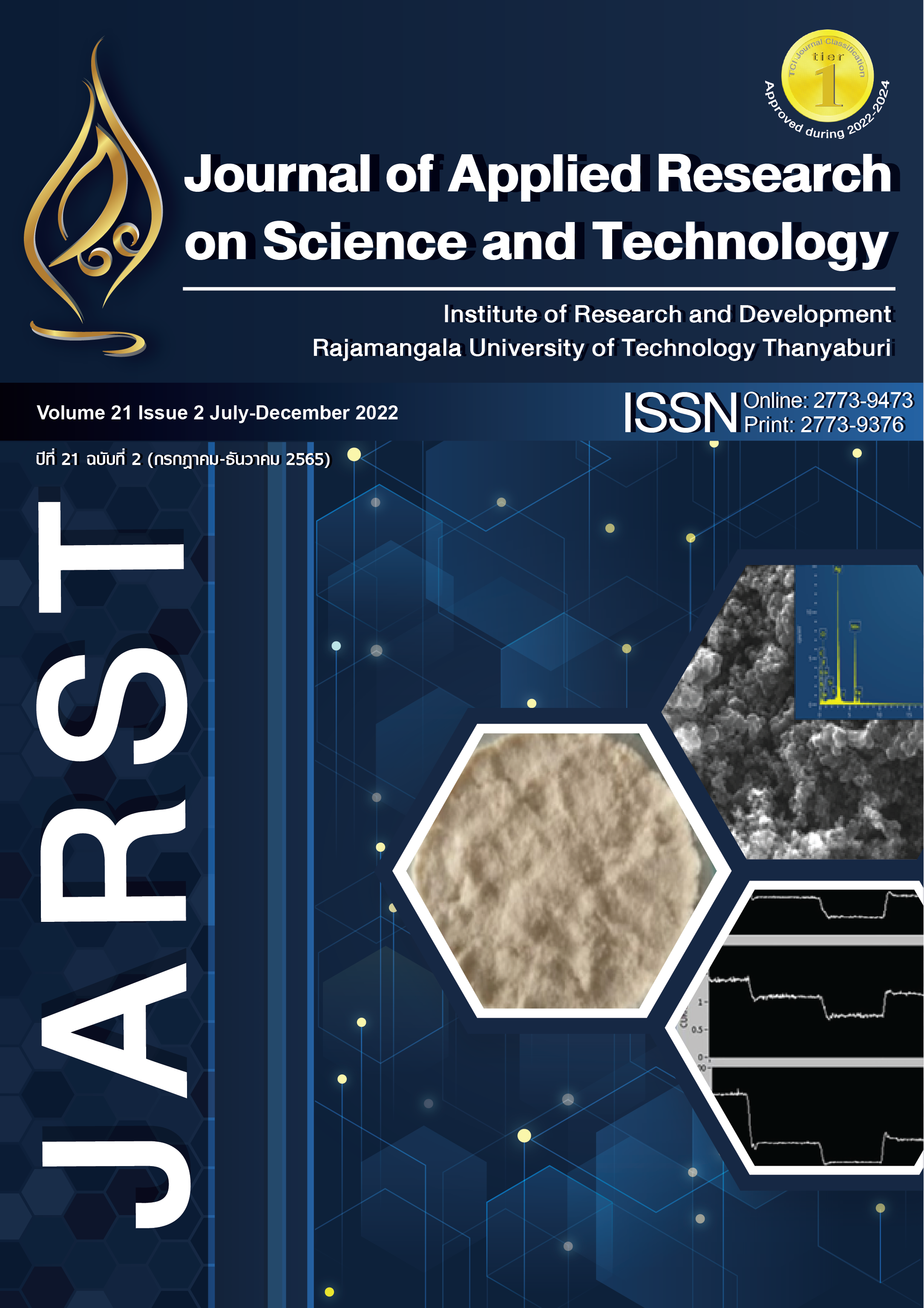Simulation of the Generating Electricity from Water Turbines Using the LabVIEW
Main Article Content
Abstract
This article shows a simulation of water turbine energy generation using LabVIEW. The objectives of this research were to 1) design and simulate the generating electricity from water turbines, 2) find an error in the simulation, and 3) find the characteristics of electricity generation with water turbines. Input variables are flow rate, pressure, torque, speed, voltage, and current to calculate water power, turbine power, electric power, water turbine efficiency, generator efficiency, and total system efficiency. A graphic user interface can adjust the flow rate and electric load. These variables will be displayed on the monitor, which makes it easy to control and understand the dynamics of the generating electricity from water turbines. The following findings were obtained 1) the simulation result has an average water power value of 266.67 W, an average water turbine power value of 51.13 W, an average electric power value of 41.17 W, an average water turbine efficiency value of 17.87 %, an average generator efficiency value 80.49 % and an average total system efficiency value 14.39 %. Which has a combined error of 1.55 % or an average error of 0.26 %, 2) the simulation can show the relationship between the volume of water flow and the power produced, the relationship between turbine efficiency and the power produced, the relationship between turbine efficiency and the volume of water flow. The forecast error values were estimated by root mean square error (RMSE) with values of 0.14, 0.59 and 0.06, respectively.
Article Details

This work is licensed under a Creative Commons Attribution-NonCommercial-NoDerivatives 4.0 International License.
References
King Mongkut's University of Technology Thonburi. Installation and maintenance manual [Internet]. Bangkok: Ministry of Energy. 2017 [cited 2021 May 27]. Available from: https://Shorter.asia/m54Se
Thanatawutthikorn K, Santiwarakorn R, Nakhonsi S. An design study of mini hydro power plant from canal by twin vertical axis hydro turbine [Internet]. Khon kaen: Farm engineering and automation technology research group. 2017 [cited 2021 May 27]. Available from: https://feat.kku.ac.th/feat4/16.pdf
Khwanphet S. A study and test of a 5 kW water turbine for electricity generation [master’s thesis]. Pathumthani: Rajamangala University of Technology Thanyaburi; 2017.
Lahamornchaiyakul W. The study of optimum parameters for low head micro water turbine using computational fluid dynamics (CFD) [master’s thesis]. Pathumthani: Rajamangala University of Technology Thanyaburi; 2009.
Charoensuk N, Pattarakewit T, Chotisawad P. Control and Data Acquisition System for Francis. Phra Nakhon Si Ayutthaya: Research and development institute, Rajamangala University of Technology Suvarnabhumi; 2012.
Kaewrattanasripho P. The hydroelectric power generation. Pathumthani: College of engineering, Rangsit University; 2012.
Husain Z, Abdulla MZ, Alimuddin Z. Basic fluid mechanics and hydraulic machines. Hyderabad: BSP; 2008.
National Instruments Corporate. LabVIEW user manual. Austin: 2003.
Kaewrattanasripho P, Sangkaew P. [Simulation of Wind Turbine Characteristic Using LabVIEW]. JARST. 2018;17(1):55-61. Thai.


